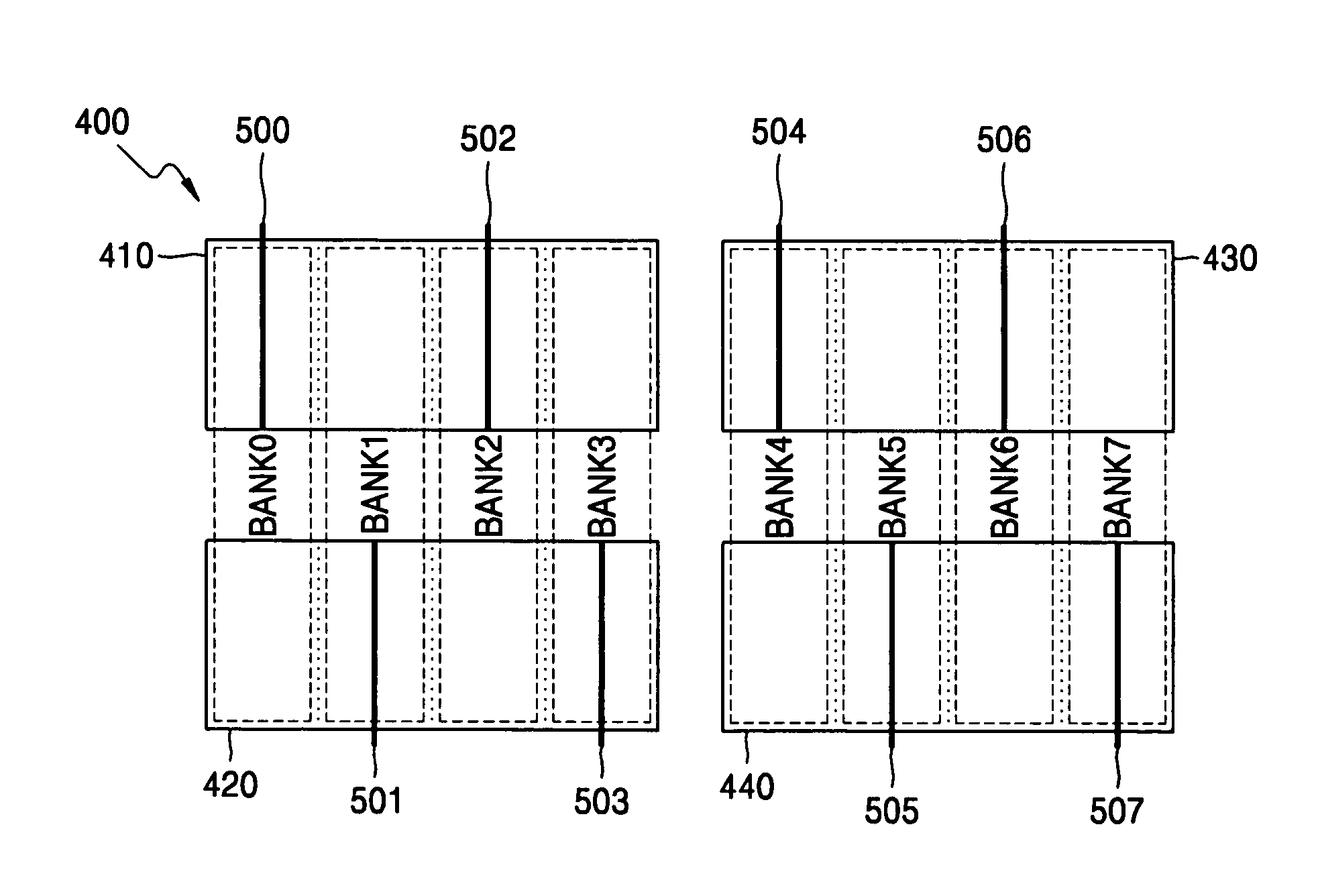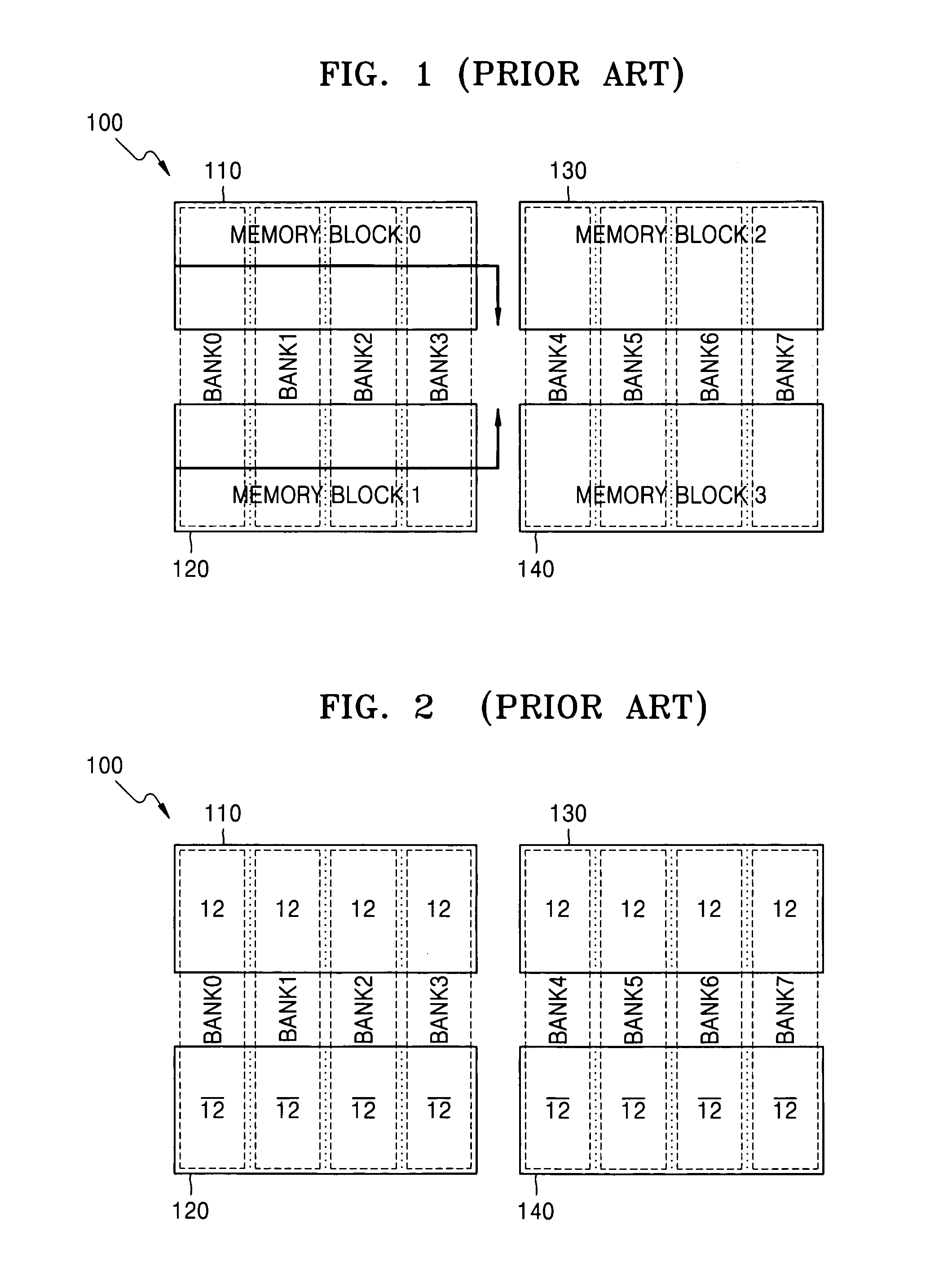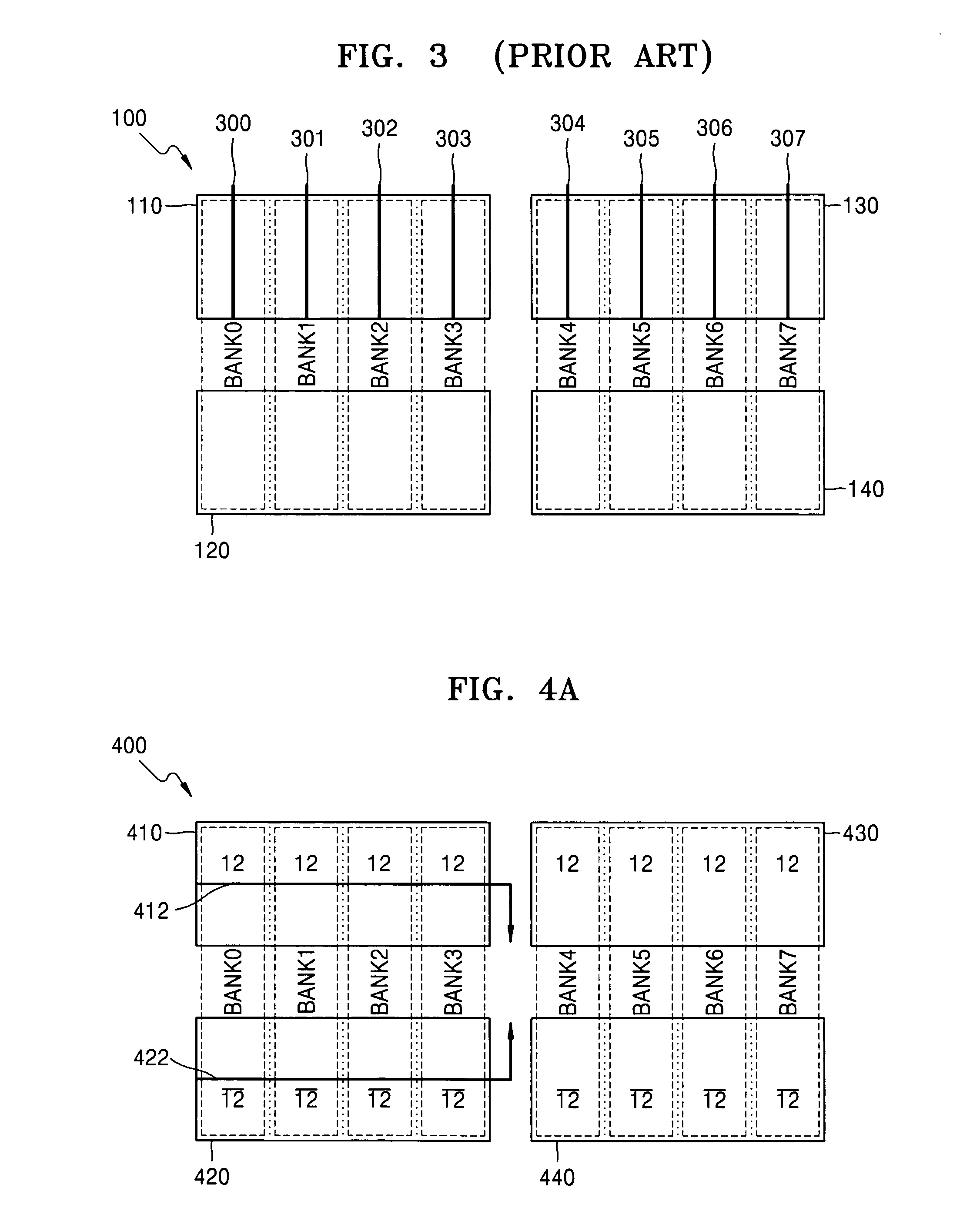Address coding method and address decoder for reducing sensing noise during refresh operation of memory device
a memory device and address decoding technology, applied in the field of semiconductor memory devices, can solve problems such as data loss, over-allocation of normal operation time, and increase the time consumed by memory controllers for requesting refresh operations
- Summary
- Abstract
- Description
- Claims
- Application Information
AI Technical Summary
Benefits of technology
Problems solved by technology
Method used
Image
Examples
Embodiment Construction
[0026]Hereinafter, embodiments of the present disclosure will be described in detail with reference to the appended drawings. Like reference numbers refer to like components throughout the drawings.
[0027]FIGS. 4a and 4b are views for explaining a memory device using a row address coding method according to an embodiment of the present disclosure. FIG. 4a is a view for explaining the row address coding method during an operation, such as a read or write operation and FIG. 4b is a view for explaining the row address coding method during a refresh operation.
[0028]Referring to FIG. 4a, as described above, an MSB of a row address signal for allocating portions of each of bank BANK0–BANK7 to one of upper and lower memory blocks 410–420 and 430–440, is RA12. Portions of banks BANK0–BANK7, within the upper first and third memory blocks 410 and 430, are addressed by a row address signal with an MSB of RA12 (“12”) and the portions banks BANK0–BANK7 within the lower second and fourth memory bl...
PUM
 Login to View More
Login to View More Abstract
Description
Claims
Application Information
 Login to View More
Login to View More - R&D
- Intellectual Property
- Life Sciences
- Materials
- Tech Scout
- Unparalleled Data Quality
- Higher Quality Content
- 60% Fewer Hallucinations
Browse by: Latest US Patents, China's latest patents, Technical Efficacy Thesaurus, Application Domain, Technology Topic, Popular Technical Reports.
© 2025 PatSnap. All rights reserved.Legal|Privacy policy|Modern Slavery Act Transparency Statement|Sitemap|About US| Contact US: help@patsnap.com



